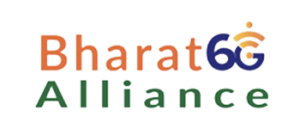Pulsone™ Technology, powered by Zak-OTFS is now widely endorsed by the global research community, leading mobile operators and vendors as a next generation wireless system for commercial and defense communications, including 6G. Cohere has been working with Orthogonal Time Frequency and Space (OTFS) modulation since the inception of the company in 2011. Cohere’s innovations have resulted in over 300 patents for OTFS modulation, Delay-Doppler channel modulation, distributed cloud functions and antenna designs.
Now, the evolution to Zak-OTFS, that transforms symbols from the Delay-Doppler domain to the time domain, shows advantages in doubly-spread channels. It represents a transformative path forward in wireless communications, and to 6G, with its ability to operate natively in the Delay-Doppler domain, important for AI-for-RAN, FR3, THz, ISAC, and multi-satellite NTN. By embracing OTFS, the telecommunications industry has the opportunity to redefine spectral efficiency in the full breadth of wireless channels, enhance sensing capabilities, and unlock the potential of 6G.
Zak-OTFS provides a fundamentally new way of interacting with the wireless channel by carrying information in the Delay-Doppler domain and embracing inter-carrier interference (ICI) rather than avoiding it, leading to superior predictability and stability in dynamic environments. Because it operates natively in the Delay-Doppler / radar domain, Zak-OTFS is also ideally suited to Integrated Sensing and Communications (ISAC), one of the most exciting new capabilities proposed for 6G, for both commercial and defense applications as it is built into the waveform.
The Zak-OTFS wireless system addresses challenges in wireless communications that have applications in autonomous vehicles, defense systems, and industrial IoT like, multipath and selective fading in complex environments, performance degradation under high-mobility conditions, channel reliability in mission-critical applications, and spectrum efficiency at scale.
Public statement about the need for Multi-G 6G
Cohere’s position is that 3GPP should leave the door open for continuous innovation and should allow for studies of new waveforms (including Zak-OTFS) and define open interfaces to enable future innovation. Academic researchers favor OTFS research over OFDM with over 1,500 global publications on OTFS in the past few years alone. Performance and use case advantages for FR3 and NTN have been theoretically proven and documented for Zak-OTFS and the waveform is optimal for ISAC, since it carries information in the radar/sensing domain. However within 3GPP, change at the physical layer is becoming increasingly challenging. While Cohere is advocating for Zak-OTFS (and is now releasing Matlab code to align understanding and results), the first step is to ensure an open and fair study of new waveforms in the 6G study item. A broader goal is the study of open interfaces to enable future waveform innovation. It is critical that the academic innovation that has powered the telecom industry continues to have a path into 3GPP. The accelerating pace of innovation in AI and upper layer protocols shows how important it is to specify interfaces that allow innovation to happen in parallel with standards development. While this is clearly a complex subject, due to the interconnectedness of the protocol stack layers, we believe now is the time to enshrine a study item in 6G to determine the feasibility of this path. Cohere would like to see a proper diligence of proposed waveforms and open interfaces.
- See Cohere’s recent presentation to 3GPP (S.Korea) “Enabling Waveform Innovation in 6G” video by Yoav Hebron, VP of Standards
- Zak-OTFS Overview by Dr. Anton Monk, SVP Strategy
- Cohere’s view – Cohere’s view – Enabling waveform innovation in 6G
Existing Infrastructure Benefits from Zak-OTFS Phased Evolution
Most important for the business side of the wireless industry, Zak-OTFS can be introduced into cellular infrastructure in a non-disruptive phased manner. This approach aligns with the shift in the industry from monolithic G’s to continuous innovation more characteristic of Internet infrastructure. Researchers have described Zak-OTFS as the “mother waveform” in prior presentations and the process described below supports those claims. The key benefit of this approach is taking advantage of Zak-OTFS’ flexibility by introducing it into existing 5G infrastructure while operating in OFDM configuration.
Recent paper on Zak-OTFS “Zak-OTFS for Integration of Sensing and Communication”
https://arxiv.org/abs/2404.04182 authored by Prof. Muhammad Ubadah, Prof. Saif Khan Mohammed, Dr. Ronny Hadani (UT Austin & Cohere), Shachar Kons (Cohere), Prof. Ananthanarayanan Chockalingam, and Dr. Robert Calderbank (Duke)
Will 6G Go Hypersonic?
OTFS Delay-Doppler channels are immune to doppler effects. OTFS communications exhibits outstanding performance while operating within the high velocities of Hypersonic objects.
Will 6G Bring Together 5G & 4G in the Cloud?
Accurate channel prediction into the future, that is native to the Delay-Doppler domain, enables orthogonal beam scheduling across multiple DUs. The same Delay-Doppler principles that enable the spectrum multiplier effect are applied to schedule orthogonal beams from multiple DUs in same spectrum.
Will 6G Bring Together Earth and Satellite Communications?
OTFS Delay-Doppler channels are immune to doppler effects. OTFS communications exhibits outstanding performance while operating within the high velocities of Low Earth Orbit (LEO) satellite constellations. Other valuable characteristics of OTFS such as a connecting to multiple satellites, higher SNR, better immunity to fading or interference, and MIMO beamforming are also vital for satellites to process weak signals from terrestrial devices.
Will 6G increase network capacity?
Our Universal Spectrum Multiplier xApp that has demonstrated up to 2x gains in spectral capacity is based on the Delay-Doppler channel model. This channel model has been extracted from the OTFS platform. Because the Delay-Doppler channel model is independent of the OTFS waveform, it can be applied to both 4G and 5G.
What is a Pulsone?
The term Pulsone describes the OTFS waveform carrier. It is “the fusion of a tone and a pulse” related through the Zak Transform. A Pulsone holds its shape when shifted in time or in frequency (Doppler shift), thus, it is invariant to distortion and delay from Doppler shift. This characteristic is valuable when communicating with fast moving objects that exhibit very high Doppler shift such as Low Earth Orbit satellites or hypersonic aircraft moving in Earth’s atmosphere.
References:
- Saif Khan Mohammed, Ronny Hadani, A. Chockalingam, Robert Calderbank, “OTFS—A Mathematical Foundation for Communication and Radar Sensing in the Delay-Doppler Domain” in IEEE BITS the Information Theory Magazine, Volume 2, Issue: 2, 1 November 2022
- Saif Khan Mohammed, Ronny Hadani, A. Chockalingam, Robert Calderbank, “OTFS—Predictability in the Delay-Doppler Domain and Its Value to Communication and Radar Sensing” in IEEE BITS the Information Theory Magazine, Volume 3, Issue: 2, June 2023
- M. Ubadah, S. Mohammed, R. Hadani, S. Kons, A. Chockalingam, R. Calderbank, “Zak-OTFS for Integration of Sensing and Communication,” arXiv:2404.04182
- D. Nisar, S. Mohammed, R. Hadani, A. Chockalingam, R. Calderbank, “Zak-OTFS for Identification of Linear Time-Varying Systems,” arXiv:2503.18900
The videos below provide foundational theoretical information on the OTFS system, the Pulsone waveform carrier, and operating in the Delay-Doppler domain. OTFS is a breakthrough that enables the use cases of “Multi-G” that cannot be addressed by today’s time-frequency model.
DR. HADANI ON OTFS COMMUNICATIONS THEORY
LEARNING IN THE DELAY-DOPPLER DOMAIN BY DR. ROBERT CALDERBANK, DUKE UNIVERSITY
https://bigdata.duke.edu/programs/air-force-center-of-excellence (October 10, 2022 Meeting)
A “Physical Layer Machine Learning Applications Want To See”? (November 14, 2022, 6G World)








